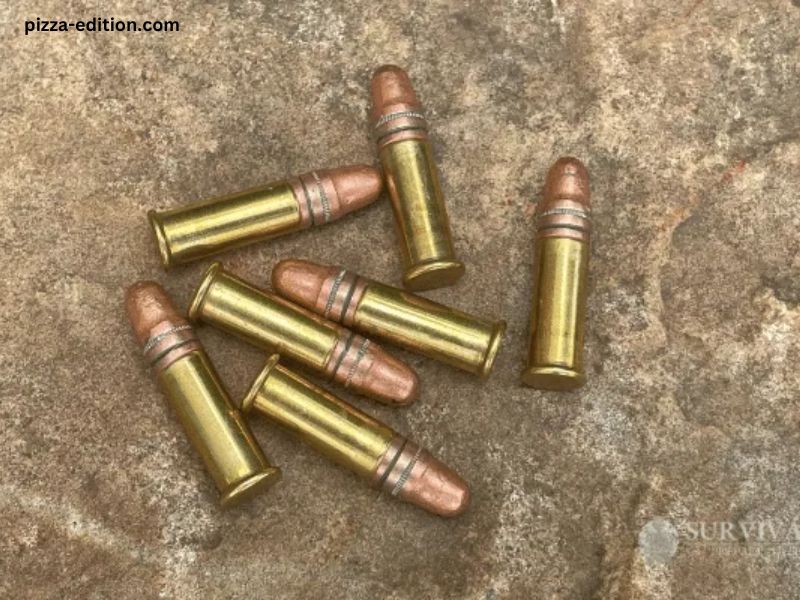When we think about bullets, the first thing that often comes to mind is speed. The speed at which a bullet travels is a topic of both scientific interest and practical importance, especially in fields such as ballistics, firearms engineering, and even forensics. Bullet speed is not just a single number; it varies significantly depending on the type of firearm, the design of the bullet, and the environmental conditions in which the bullet is fired. This article delves into the factors that influence bullet speed, examines the typical velocities associated with different types of firearms, and explores the implications of these speeds.
Understanding Bullet Speed: Basic Concepts
Bullet speed, commonly referred to as muzzle velocity, is the speed of the bullet as it exits the barrel of a firearm. This speed is typically measured in feet per second (fps) or meters per second (m/s). To understand how fast a bullet travels, it’s essential to consider several key factors:
- Caliber and Bullet Design: The size (caliber) and shape of a bullet play a crucial role in determining its speed. Smaller, lighter bullets tend to travel faster than larger, heavier ones. Additionally, the design of the bullet, including its aerodynamics, affects how it interacts with the air as it travels, impacting both its speed and accuracy.
- Powder Charge: The amount and type of gunpowder or propellant used in a cartridge significantly influence bullet speed. More powerful charges can propel a bullet at higher velocities. However, there is a limit to how much powder can be safely used, as excessive pressure can damage the firearm or even cause it to explode.
- Barrel Length: The length of the firearm’s barrel also affects bullet speed. A longer barrel allows more time for the expanding gases from the powder to accelerate the bullet before it exits the firearm. Generally, rifles with longer barrels produce higher muzzle velocities than handguns with shorter barrels.
- Environmental Factors: Conditions such as air temperature, humidity, and altitude can influence bullet speed. For instance, bullets generally travel faster in warmer temperatures and at higher altitudes, where the air is less dense.
Bullet Speed by Firearm Type
The speed of a bullet can vary dramatically depending on the type of firearm used. Below, we’ll explore the typical muzzle velocities associated with different classes of firearms, including handguns, rifles, and shotguns.
Handguns
Handguns, including pistols and revolvers, generally have lower muzzle velocities compared to rifles due to their shorter barrels and smaller powder charges. The typical bullet speed for a handgun ranges from 700 to 1,500 fps (213 to 457 m/s).
- 9mm Parabellum: One of the most common handgun calibers, the 9mm bullet typically travels at speeds between 1,000 to 1,200 fps (305 to 366 m/s). This velocity is sufficient for effective self-defense and law enforcement applications.
- .45 ACP: The .45 ACP (Automatic Colt Pistol) is known for its stopping power rather than speed. Bullets from this caliber generally travel at around 850 fps (259 m/s), making it slower but delivering more kinetic energy upon impact.
- .357 Magnum: Known for its high velocity and penetrating power, the .357 Magnum can achieve muzzle velocities of 1,200 to 1,500 fps (366 to 457 m/s), making it one of the faster handgun calibers.
Rifles
Rifles, with their longer barrels and larger powder charges, produce much higher muzzle velocities than handguns. Rifle bullets can reach speeds of 2,000 to 4,000 fps (610 to 1,219 m/s), depending on the caliber and design.
- .223 Remington/5.56 NATO: This caliber, used in many modern sporting rifles (such as the AR-15), typically produces bullet speeds between 2,800 and 3,200 fps (853 to 975 m/s). The high velocity of these bullets allows for flat trajectories and increased accuracy over long distances.
- .308 Winchester/7.62 NATO: A popular caliber for hunting and military use, the .308 Winchester produces bullet speeds ranging from 2,600 to 2,800 fps (792 to 853 m/s). This balance of speed and power makes it effective for medium to long-range shooting.
- .50 BMG: The .50 Browning Machine Gun (BMG) round is a massive cartridge used in heavy machine guns and sniper rifles. It can achieve muzzle velocities of around 2,800 to 3,000 fps (853 to 914 m/s), making it capable of penetrating armor and other barriers.
Shotguns
Shotguns fire a variety of ammunition types, including slugs and pellets (shot). The muzzle velocity of shotgun rounds is generally lower than that of rifles but higher than most handguns. Typical shotgun slug speeds range from 1,200 to 1,800 fps (366 to 549 m/s).
- 12 Gauge Slug: A common slug for hunting and self-defense, the 12-gauge slug can travel at speeds of around 1,400 to 1,600 fps (427 to 488 m/s). This is sufficient to deliver significant stopping power at close to moderate ranges.
- Buckshot: Shotgun shells loaded with buckshot (multiple large pellets) typically have muzzle velocities of around 1,200 fps (366 m/s). The speed is lower than that of slugs, but the spread of pellets increases the likelihood of hitting the target at close range.
Specialty Ammunition and Supersonic Bullets
While most bullets travel at subsonic speeds (below the speed of sound, which is approximately 1,125 fps or 343 m/s at sea level), some are designed to travel faster, entering the supersonic range. Supersonic bullets create a sonic boom, known as a “crack,” which can be heard as the bullet passes by.
- Supersonic Ammunition: Many rifle calibers, such as the .223 Remington, .308 Winchester, and .50 BMG, are capable of supersonic speeds. These bullets are designed for long-range accuracy and can maintain high speeds over considerable distances.
- Subsonic Ammunition: In contrast, subsonic ammunition is designed to travel below the speed of sound, often for use with suppressors (silencers) to reduce noise. Subsonic rounds typically have muzzle velocities of 900 to 1,100 fps (274 to 335 m/s), making them quieter but less effective over long distances.
Factors Affecting Bullet Speed in Flight
Once a bullet leaves the barrel, its speed begins to decrease due to air resistance and gravity. Several factors influence how quickly a bullet slows down and how far it can travel.
- Air Resistance: Also known as drag, air resistance slows the bullet as it travels. The shape of the bullet plays a significant role in how much drag it experiences. Streamlined, pointed bullets (such as those used in rifles) experience less drag and maintain higher speeds over longer distances.
- Bullet Weight and Shape: Heavier bullets tend to retain their speed better than lighter ones, but they also start slower. The bullet’s shape, particularly its ballistic coefficient (a measure of its aerodynamic efficiency), affects how much it slows down. Bullets with higher ballistic coefficients maintain their speed and trajectory more effectively.
- Spin and Stability: Bullets are typically spun by the rifling (spiral grooves) in the gun barrel. This spin stabilizes the bullet and helps it maintain a straight path. A stable bullet is less likely to tumble in flight, which would slow it down and reduce accuracy.
- Gravity: Gravity pulls the bullet downward as it travels, causing it to drop over distance. While this doesn’t directly affect the bullet’s speed along its trajectory, it does impact the overall distance the bullet can travel before hitting the ground.
Real-World Applications and Implications of Bullet Speed
Understanding bullet speed is crucial for various real-world applications, including hunting, target shooting, law enforcement, and military operations. Here’s why bullet speed matters in different contexts:
- Hunting: Hunters need to know the speed and trajectory of their bullets to make accurate shots at varying distances. Faster bullets allow for flatter trajectories, reducing the need to compensate for bullet drop over long distances.
- Self-Defense and Law Enforcement: In self-defense situations, bullet speed affects both the stopping power and the risk of over-penetration. Faster bullets are more likely to penetrate barriers, which can be both an advantage and a risk in crowded environments.
- Military Operations: In military contexts, bullet speed is critical for long-range engagements. Snipers, in particular, rely on high-velocity rounds to hit targets accurately at extreme distances. Additionally, supersonic bullets are often used to maximize range and penetration.
- Forensic Analysis: In forensic investigations, bullet speed can help determine the type of firearm used and the distance from which a shot was fired. By analyzing bullet wounds and impact marks, forensic experts can estimate the speed and energy of the bullet, aiding in crime scene reconstruction.
Conclusion
The speed at which a bullet travels is a complex and fascinating topic with significant implications for various fields, from ballistics to forensics. Bullet speed is influenced by numerous factors, including the type of firearm, bullet design, powder charge, and environmental conditions. By understanding these factors, shooters and professionals can make informed decisions about ammunition selection and firearm use. Whether for hunting, self-defense, or military purposes, the speed of a bullet is a critical aspect of its performance, impacting accuracy, range, and effectiveness.




